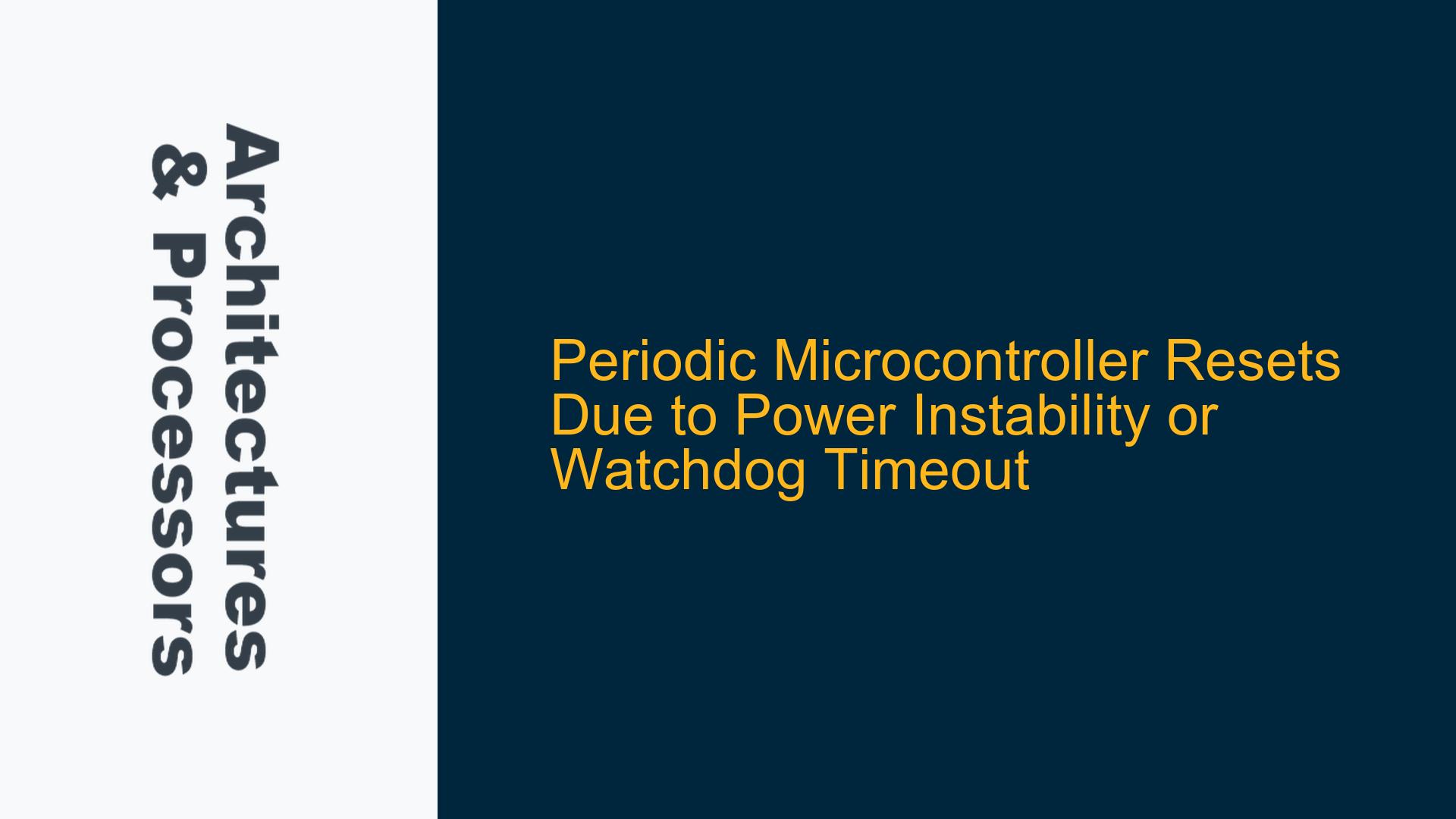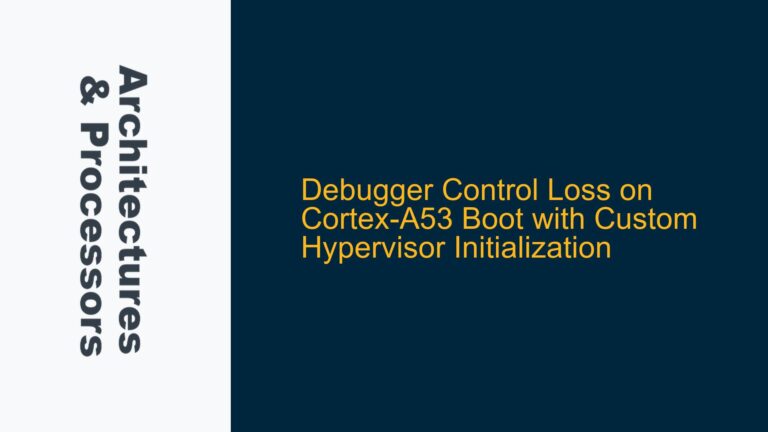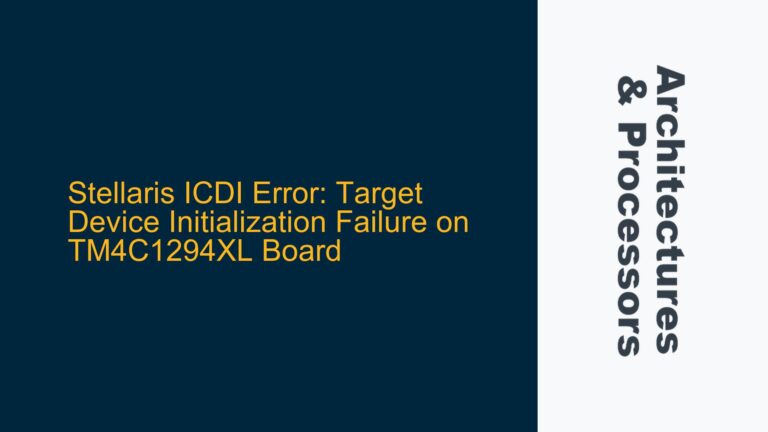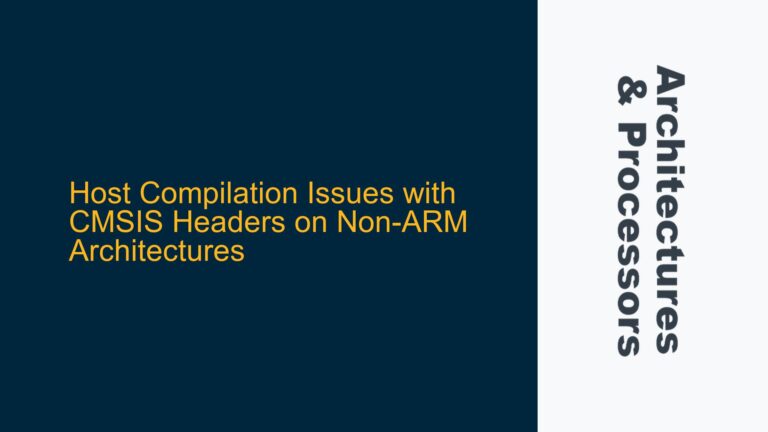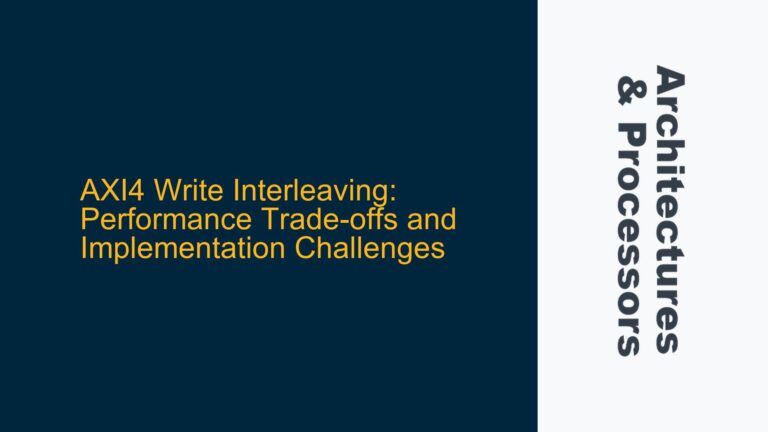ARM Cortex-M0 Periodic Resets During Continuous Operation
The issue at hand involves an ARM Cortex-M0 based microcontroller, specifically the Nuvoton M058LBN, experiencing periodic resets during continuous operation. The user reports that the microcontroller executes a while(1) loop with several functions that should run indefinitely. However, after printing a debug statement approximately ten times, the microcontroller resets and the process repeats. This behavior suggests a systematic issue rather than a random fault. The periodic nature of the resets indicates a potential underlying cause related to either hardware instability or a software mechanism such as a watchdog timer.
The Nuvoton M058LBN microcontroller is based on the ARM Cortex-M0 core, which is known for its low power consumption and simplicity. However, this simplicity also means that the core lacks some of the more advanced debugging and fault detection features found in higher-end Cortex-M series processors. This makes diagnosing issues like periodic resets more challenging, as the root cause could be multifaceted, involving both hardware and software components.
The user has already considered the possibility of an interrupt causing the reset but has dismissed it due to the periodic nature of the issue. While interrupts can cause unexpected behavior, they are typically not periodic unless explicitly programmed to be so. This leads us to consider other potential causes, such as power supply instability, watchdog timer timeouts, or even firmware bugs that could lead to a stack overflow or other critical errors.
Power Supply Instability and Watchdog Timer Configuration
One of the primary suspects in this scenario is power supply instability. Microcontrollers, including the Nuvoton M058LBN, are highly sensitive to voltage fluctuations. If the voltage supplied to the microcontroller drops below the specified operating range, even momentarily, the microcontroller may reset. This is a protective mechanism to ensure that the device does not operate unpredictably under low voltage conditions. The user’s description of the issue being periodic could align with a power supply that is intermittently failing to provide sufficient current or voltage, causing the microcontroller to reset at regular intervals.
Another potential cause is the watchdog timer. Most microcontrollers, including the Nuvoton M058LBN, include a watchdog timer as a safety feature. The watchdog timer is designed to reset the microcontroller if the firmware fails to "feed" it within a specified time period. This is intended to recover from software lockups or infinite loops. If the watchdog timer is enabled but not being serviced correctly in the firmware, it could cause the microcontroller to reset periodically. The user’s observation that the reset occurs after approximately ten iterations of a debug print statement could suggest that the watchdog timer is timing out around that interval.
To further complicate matters, the reset could also be caused by a combination of these factors. For example, a marginal power supply could cause the microcontroller to reset, and if the watchdog timer is not being serviced correctly, it could exacerbate the issue. Additionally, firmware bugs such as stack overflows, illegal memory accesses, or unhandled exceptions could also lead to resets. However, these types of issues are typically less predictable and would not usually result in such a periodic reset pattern.
Diagnosing Power Supply Issues and Correcting Watchdog Timer Settings
To diagnose and resolve the issue, a systematic approach is required. The first step is to verify the stability of the power supply. This can be done using an oscilloscope to monitor the voltage supplied to the microcontroller. The voltage should remain within the specified operating range (typically 1.8V to 3.6V for the Nuvoton M058LBN) at all times, even under load. If the voltage drops below this range, even briefly, it could cause the microcontroller to reset. In such cases, the power supply circuit should be reviewed and improved to ensure stable operation.
If the power supply is stable, the next step is to examine the watchdog timer configuration. The user should check whether the watchdog timer is enabled and, if so, whether it is being serviced correctly in the firmware. The watchdog timer service routine should be called at regular intervals, typically within the main loop or in a periodic interrupt. If the watchdog timer is not being serviced, it will eventually time out and cause a reset. The user should also verify the watchdog timer’s timeout period to ensure it aligns with the observed reset interval.
In addition to these steps, the user should also check the reset status register of the microcontroller. Most microcontrollers, including the Nuvoton M058LBN, have a reset status register that indicates the source of the last reset. This register can provide valuable information about whether the reset was caused by a power-on reset, a watchdog timer reset, or another source. By examining this register, the user can narrow down the potential causes of the reset.
If the reset status register indicates a watchdog timer reset, the user should review the firmware to ensure that the watchdog timer is being serviced correctly. If the register indicates a power-on reset, the user should focus on diagnosing and improving the power supply. If the register indicates another type of reset, such as a brown-out reset or a software reset, the user should investigate the corresponding causes.
Finally, if no clear cause is identified, the user should consider enabling additional debugging features, such as breakpoints or trace debugging, to capture more information about the state of the microcontroller at the time of the reset. This can help identify any firmware issues that may be contributing to the problem.
In summary, the periodic resets experienced by the Nuvoton M058LBN microcontroller are likely caused by either power supply instability or an incorrectly configured watchdog timer. By systematically diagnosing these potential causes and making the necessary adjustments, the user should be able to resolve the issue and ensure stable operation of the microcontroller.
